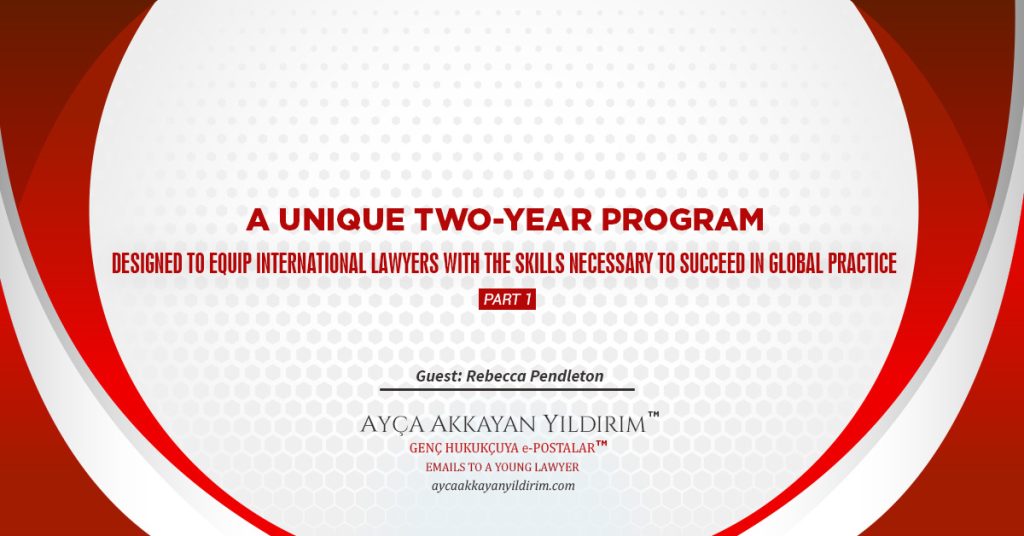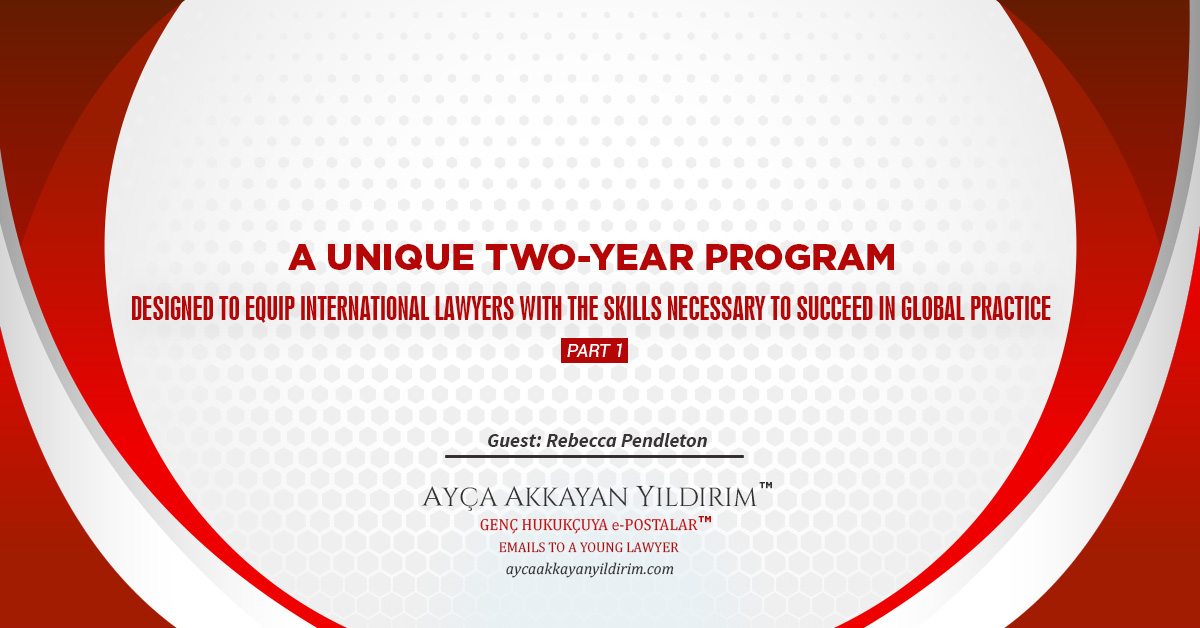Tuesday, February 28, 2023


Date : February 28, 2023
To : Young Lawyers
Re : A UNIQUE TWO-YEAR PROGRAM DESIGNED TO EQUIP INTERNATIONAL LAWYERS WITH THE SKILLS NECESSARY TO SUCCEED IN GLOBAL PRACTICE – PART I
INTERNATIONAL LL.M. PROGRAMS: BOSTON UNIVERSITY SCHOOL of LAW, BOSTON, MA, USA
I sincerely thank Rebecca Pendleton, Faculty Director of the Legal English Certificate Program & Two-Year LLM, for answering my questions. AAY
AAY: Dear Rebecca, please tell us what type or category of LL.M. degree programs Boston University School of Law offers.
RP: Boston University offers four Master of Law (LLM) programs, LLM in American Law (this is our “general law” program), Tax Law, Banking and Financial Law, and Intellectual Property. We also offer a Master in the Study of Tax Law (MSL-T), which is a program for those without a law degree, and a Two-Year LLM, which offers a Legal English Certificate in the first year and one of the four LLM programs or MSL-T in the second year.
AAY: I want to focus on the Two-Year LL.M. Program (“Two-Year LL.M.”) in this interview. For what purpose and for what kinds of needs was this program designed?
RP: BU School of Law’s Two-Year LLM Program is designed for students who seek an additional year of U.S. legal foundational topics and legal English language support. It is designed to equip ambitious international students and lawyers with the academic, legal, and language skills necessary to succeed in U.S. law school.
AAY: What are the program’s admission requirements?
RP: In order to be admitted to BU Law’s Two-Year LLM program, applicants must have completed a bachelor-level degree. Those seeking to enter an LLM program after the first year must also have a first degree in law (typically LLB). We also ask applicants to submit their English proficiency scores from either IELTS or TOEFL. We do not currently accept Duolingo. Ideally, the IELTS should be a combined score of 5.5 or higher; the TOEFL score should be 85 or higher on the iTOEFL (compared to 100 as required for a one-year LLM program); or 550 or higher on the paper-based TOEFL. We still encourage applicants to apply if their scores are slightly below those listed above, as we assess applications based on a variety of factors in addition to English proficiency scores.
AAY: While on the one hand, students of larger LL.M. programs are assumed to have greater cross-cultural experience, on the other hand, those of smaller programs are considered to have received more personalized attention and counseling. Could you please evaluate the size of the Two-Year LL.M. and its offerings in both aspects?
RP: The average class size of the Legal English Certificate Program, the first year of the Two-Year LLM, is 20 students. Students in our program are geographically diverse and range in their age, gender identity, sexual orientation, ethnicity, and socioeconomic status. The program has graduated students from around the globe, including but not limited to Brazil, Mexico, Peru, Colombia, Saudi Arabia, Thailand, China, France, Indonesia, South Korea, Armenia, Kuwait, and Taiwan. The smaller class sizes allow our highly qualified faculty to provide more individualized attention to students with the goal of supporting them in mastering the foundations of U.S. legal topics and academic skills needed to succeed in their LLM program, as well as becoming highly proficient in legal English.
AAY: Could you please share the degree details? How many credit hours are required to complete the Two-Year LL.M.?
RP: The Legal English Certificate Program is the first year of the Two-Year LLM program and has a fixed curriculum of 25 credits. Students enroll in a specialized mix of legal English, legal skills, and legal doctrine coursework. They have the option to begin their students in September for the fall semester or in January for the spring semester. In the fall semester, students take U.S. Legal Discourse (6 credits), Academic Skills for U.S. Law Studies (3 credits), and Introduction to U.S. Legal Culture (3 credits). In the spring semester, students take Legal Reasoning and Analysis (6 credits), International Contracts and Negotiations (1 credit), Legal Writing (2 credits), Persuasive Legal Advocacy (2 credits), and Topics in American Law (2 credits).
Descriptions of the content of each of these courses are available here: https://www.bu.edu/law/academics/find-degrees-and-programs/masters-llm-programs/two-year-llm-program/curriculum/
In addition, students attend a 2-week 0-credit summer course, usually at the end of August, called Academic Skills for the International Lawyer, which helps solidify all the concepts they have learned in their first year shortly before entering their second LLM year. Students must have a 3.0 grade point average in order to continue into the second year of the program. During the second year, students have more flexibility and can select a variety of classes depending on their LLM program offerings. Students in their second year, regardless of the program, must enroll in a minimum of 24 credits, or at least 12 credits a semester.
AAY: I know that program’s first year is dedicated to improving students’ English proficiency and helping them gain a solid understanding of the US legal system. In what ways is the Two-Year LL.M. unique and different from any Legal English summer program or certificate?
RP: BU Law’s Two-Year LL.M. Program offers students a more comprehensive LL.M. experience than is possible with a 1-year LLM program, or any Legal English summer program or stand-alone certificate. First, BU Law’s Two-Year LLM offers intensive development of legal writing, case analysis, and advocacy skills in the first year, which allows students to confidently meet the academic challenges of their LLM coursework in the second year. The in-depth knowledge and training that our students acquire in their first year of the program simply cannot be attained in a short-term summer program and is more rigorous than a stand-alone certificate. Second, having an additional year to study legal English gives students the opportunity to make substantial improvements in their English that are not possible in one-year programs. While students in a summer program would make some progress, a summer program is limited to a maximum of 3 months. Thus, students are unable to gain the same amount of exposure to listening, speaking, reading, and writing in English with high fluency on sophisticated legal topics as they gain in a 2-year program. As such, students in a 2-year program will undoubtedly make greater improvements in these areas than in a 3-month program and be better situated to compete for employment that requires one to conduct transactional legal work in English. Third, spending two years in Boston and at BU Law allows students, and any of their family members, the opportunity to really become a Boston local and to fully appreciate the rich history that Boston has to offer. Students also have more opportunities to visit court proceedings, attend talks by special guest lecturers, and participate in the many social events sponsored by the law school.
AAY: Could you please elaborate on the planning and teaching methods in this first -dedicated- year of the program?
RP: The Legal English Certificate Program is the first year of BU Law’s Two-Year LLM Program. Each of the faculty in the program has a juris doctorate degree, and each has more than a decade of teaching English Language Learners. Our teaching philosophy focuses on creating a rich and dynamic learning environment that fosters students’ passion for the law while teaching them the skills and knowledge that will prepare them to be sophisticated users of the English language. We believe that while students bring different experiences, and levels of English and legal skills to the classroom, every student is capable of achieving excellence.
As such, our program’s teaching pedagogy is student-centered and employs the following methodologies:
- Conferencing: We believe that conferencing with students who are new to legal writing in English provides a platform for understanding how students process information and is an invaluable opportunity to help them develop as legal thinkers and writers. The process through which students draw conclusions is as important as the conclusions themselves.
- Praxis: We encourage students to apply what they have learned in class to real-world problems. Discussing what they learn in class and then applying it in their writing and oral advocacy inspires substantive learning and facilitates their thinking in English as lawyers.
- Cross-cultural learning: Culture guides our values, attitudes, and behavioral norms, thus, we constantly, often unconsciously, attach culturally based meaning to what we see and hear. We help students learn through a cross-cultural lens to explore the ways in which they are different and similar to each other, and perhaps their future clients, in order to appreciate different communication styles, strengthen connections and have a more nuanced hypothesis about what is occurring in these relationships.
- Communicative Language Teaching: We aim to make learning more compelling and less intimidating by facilitating participation, not by drilling students about readings, but instead by holding a reflective group conversation in order to reach conclusions and draw analyses together. This compels students to use specific information or concepts to negotiate meaning. Achieving that moment when a student makes the connection between thinking and being able to effectively express that thought in English orally and in writing is one of the rewards of teaching in our program.
- Multifaceted Evaluation: When students are able to effectively participate in assessing the quality of other writing, their analysis of their own writing improves. In addition to receiving feedback directly from our faculty, our students utilize tailored performance evaluation materials, structured in the form of a checklist to conduct informed peer-to-peer reviews. In class and conferences, we consistently refer to previously covered materials and exercises for reinforcement.
